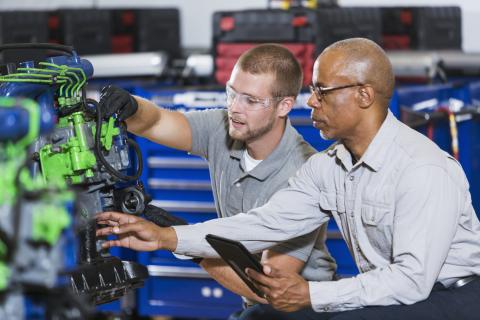The Basics of Automotive Diagnosis
One of the most important elements of an automotive technician’s skill set is the ability to diagnosis vehicle troubles. After all, without an accurate diagnosis, who’s to say that a proposed solution would actually help the vehicle in the first place?
Fortunately, with the appropriate training, a bit of practice and the help of modern technology, diagnosing problems in cars, trucks and other vehicles doesn’t have to involve guesswork. To learn more about how NYADI The College of Automotive and Diesel Technology-trained techs carry out diagnostics, we’ve provided a brief overview of the typical car diagnosis process.
Getting Started
Before we explore modern automotive diagnostics, it’s worth discussing how modern diagnostic technology came about in the first place. Most sources agree that Volkswagen pioneered the electronic diagnostic system in the late 60s and early 70s. Datsun followed suit within the next decade. But while these features represented major advancements in technology, they weren’t standardized, which meant that a given mechanic’s ability to make the most of each system wasn’t guaranteed.
Fortunately, in 1996, the OBD-II (on-board diagnostics II) system was completed and made mandatory across all passenger cars and light trucks sold in the U.S. This system took influence from older systems, but error codes are standardized across all manufacturers. Fast-forward to 2010, and a similar system was approved for medium- and heavy- duty trucks, known as HD (heavy-duty) OBD.
How OBD Systems Make Car Diagnosis Simple
Thanks to the development of OBD systems, the first step of the diagnostic process is as simple as connecting a scanner to the vehicle’s standardized port. The scanner will then display a code, which you can translate with nearly any OBD resource – that’s standardization in action.
But there’s a catch – a car diagnosis code won’t always explain the exact problem. Certain codes correspond with certain parts, and while the code may make clear where the issue’s taking place, it may not be clear exactly what went wrong. That’s where your own automotive expertise enters the picture. After you’ve worked your way through diagnostic training and gained experience with the diagnostic process, you should have no trouble using the error code as a starting point and working your way to an accurate diagnosis.
Prepare for a Bright Future
At NYADI The College of Automotive and Diesel Technology, we’re committed to teaching practical automotive skills that will serve our students well for years to come. Learn more about all that our academic programs have to offer, and then apply online to get started.



